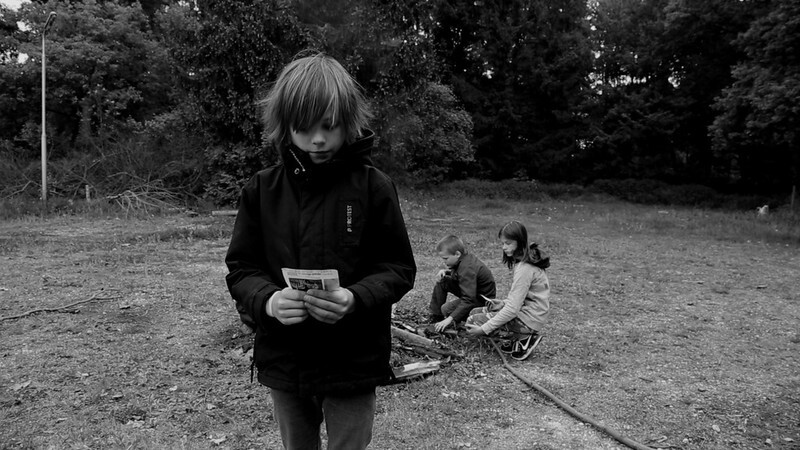Daniel Walber about Conference Fascinations
One of the more intriguing items on the programme of the 2015 Jihlava International Documentary Festival was the first edition of the Conference Fascinations. It was listed as a “one-day conference on experimental film distribution,” a rare combination of words for a film festival. Many critics, filmmakers and other industry professionals aren’t necessarily even aware of the existence of experimental distribution. In a landscape where many nonfiction features struggle to make it to wider audiences, the prospects for short experimental nonfiction can seem entirely unknown.
Which is, of course, one of the many excellent reasons to start up a conference on the subject. Another reason, and a more specific one in the context of Jihlava, is the world of Czech experimental filmmaking. Fascinations is a unique opportunity for Czech artists to meet distributors from across Europe and North America. A number of films were also shown, representing the artistic diversity of this small community. Standouts included work by Alexandra Moralesová and Vít Pancíř, as well as the science fiction-hued digital experiments of Michal Kindernay, Pavel Mrkus and Jakub Korelt.
Nine distributors spoke at the event, representing institutions in five countries. Canadian institutions V-tape and Canadian Filmmakers Distribution Center (CFMDC) were there, as well as The Filmmakers Cooperative and Electronic Arts Intermix (EAI) from the USA. European distributors included Collectif Jeune Cinéma and Light Cone from France, Eye Experimental from The Netherlands, LUX from the UK and sixpack film from Austria. After introductions there were three discussion panels, with topics ranging from commercial strategies and distribution models to the film acquisitions process and the relationships these distributors have with art galleries, museums and festivals.
A shared spirit was immediately apparent, as well as some shared burdens. These institutions, non-profits dedicated to preserving and presenting experimental films, consider themselves to be stewards of the work in their collections. This means not only the hard work of preservation, but also the duty of making sure artists get paid. V-tape and sixpack film have a revenue share as high as 70% for the artist, while EAI splits their revenue 50/50.
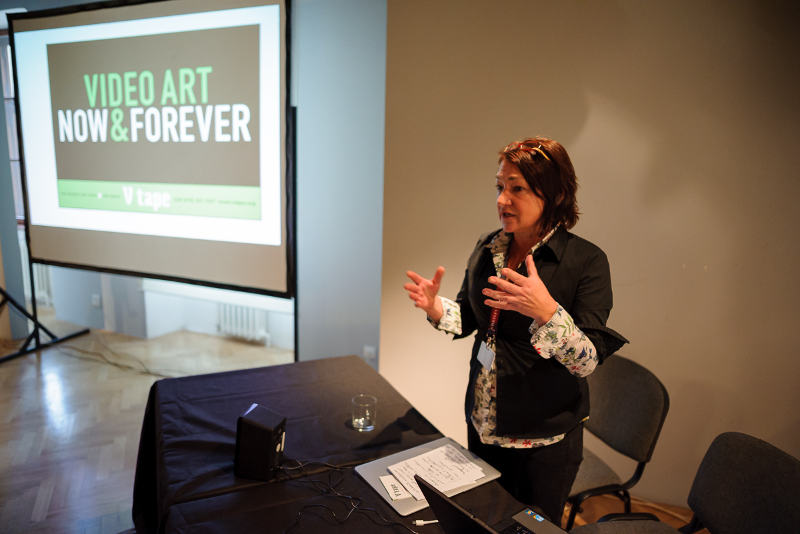
Conference Fascinations: Wanda vanderStoop / V-tape / Canada
Distributors also occasionally run up against problems with festivals or galleries who request free access to particular works, as if it were a promotional arrangement. As distribution director Wanda vanderStoop of V-tape explained, “Everything that we do is focused on assisting the artist, taking the cost away from the artist and leveraging those expenses on the client who is requesting the work.” Festivals that are used to receiving films for free from commercial distributors aren’t necessarily pleased with this arrangement. According to director Emmanuel Lefrant of Light Cone, for instance, “We have many enemies now because they’re not used to having to pay for films.”
Much of the work of these experimental distributors has to do with navigating the often nebulous landscape of licensing work to other institutions, including galleries and museums. Director Théo Deliyannis of Collectif Jeune Cinéma explained that they frequently have to negotiate price, particularly if a venue is interested in projecting a work on a loop. This can be a real burden on physical film in particular, and so the price of a rental can require a great deal of discussion.
Then there are the other issues of licensing. Can a museum or gallery acquire access to an uncompressed digital file, for example, which becomes akin to their ownership of the work? How long do they retain the right to screen a film? Distribution director Rebecca Cleman of EAI described her institution’s new “life of work” contract, which seeks to clear up some of these legal questions. The prices won’t be published and it will only be offered “to institutions that we feel we can trust that will give something back to the artist." In a nutshell, the license retains the rights to the work as long as they treat it properly. As Cleman elaborated, “If an institution maintains the digital file, then they might have this work in perpetuity. But if they don’t do that and their file gets corrupt, they might only have it for a year.”
There are new frontiers even in the realm of film licensing, as it turns out. That said, filmmakers should also be aware that these institutions may not be able to handle every last detail on their behalf. Not every distributor offers promotional support and not every distributor will help filmmakers submit to festivals. Some will help with festival forms but not with submission fees, for example. It’s important for a filmmaker to inquire about these details when approaching a distributor. Yet when it comes to the legal and financial commitments of these distributors, there is unity in their mission. It is to make sure that artists get paid and that the films are screened correctly and fairly.
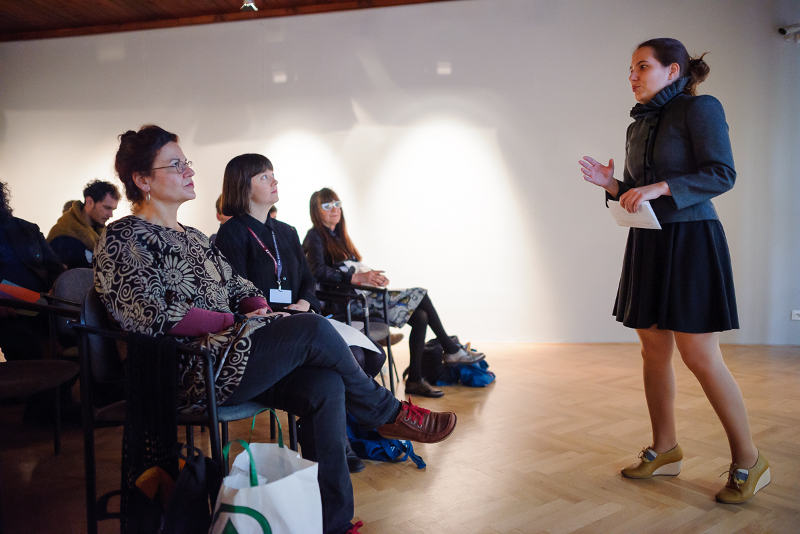
Conference Fascinations: Andrea Slováková / Jihlava IDFF / Czech Republic
So how does a filmmaker actually get involved? It depends on the institution. CFMDC simply requires an once-in-a-lifetime fee from the filmmaker and rarely rejects films. As executive director Lauren Howes explains, this “open door policy” doesn’t necessarily mean that every film makes sense for their catalogue. Occasionally they will take a film and represent it during its festival run, but will not take part in any commercial theatrical or broadcast release afterwards.
Other institutions may not have an open door, but they do have broad collections. The Filmmakers Cooperative collection includes everything from feature films to music videos and commercials. While Light Cone mostly takes shorts, the running time of their whole collection ranges from two seconds to eight hours. Light Cone is also one of the distributors that is primarily interested in a body of work rather than an individual film, which is why they require a minimum of three films for submission. And, as is the case for all of these distributors, it’s important to keep their profile in mind. “It’s up to your judgement, but if you have a film that isn’t experimental or avant-garde you can send it to us but it’s going to sit on the shelf. Be smart and send what’s going to be rented,” says Lefrant.
It is also important to remember that these institutions have more on their plate than the distribution of new experimental films. Executive director Mary Magdalene Serra of The Filmmakers Coop likes to think of their collection as “organic,” an ever-growing repository of cinema’s history. Their catalogue goes back as far as the early 1920s, and half of their filmmakers are deceased. This breadth is how an institution becomes seen as a crucial national resource. For the Filmmakers Coop the acknowledgement of this value is how they were able to, with the help of Martin Scorsese, receive temporary housing from the City of New York after September 11th, 2001.
An extensive collection also necessitates the labours of preservation. There are thousands of films in these collections and their maintenance is expensive. This is to say nothing about digitization, which is now a major project for every distributor. The process is incredibly expensive, despite the substantial misunderstandings of many outsiders. People think that scanning these works is neither time consuming nor expensive, but it’s both. They ask why, say, EAI can’t put their entire collection online and make it free. As Cleman explained, “There are huge physical costs and burdens behind what seems to be immediate and nonphysical digital work.”
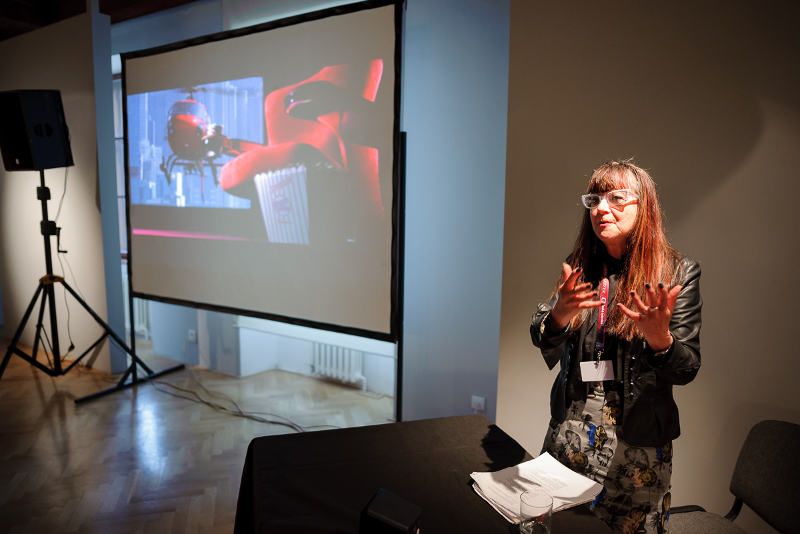
Conference Fascinations: Mary Magdalene Serra / The Filmmakers Cooperative / USA
There are also the obstacles of the process itself. “Labs have no idea how to handle experimental work, especially collage film,” according to Howes. “Most labs just press go under one light and run it.” Back in 2005, before HD had come to dominate the conversation, Light Cone digitized a large number of films on SD because it seemed like a better financial decision. Now, a decade later, they have to re-digitize them all.
Serra pointed out that material may not come back. When The Filmmakers Coop sends something to the Museum of Modern Art, for example, they sing an agreement that MoMA will make a copy. Other institutions may acquire the rights of a work by a deceased artist if they digitize it. Flaming Creatures is now owned by Gladstone Gallery and The Filmmakers Coop aren’t allowed to digitize more of their collection of films by Jack Smith.
Yet in spite of all of this, the work is getting done. At V-tape, new films are digitized weekly and those films requested by programmers and curators are underwritten by those institutions interested in showing them. Many large digitization projects are undertaken with specific goals in mind, and funded for that purpose. V-tape’s aboriginal digital access project digitized over 700 films by aboriginal filmmakers in less than a year. Light Cone received a grant of 100,000 euro to restore five films, with the requirement that they be French films made before the year 2000. They’re using the money to restore work by Germaine du Lac.
All of this work, once again, comes back to the concept of stewardship. By restoring du Lac’s films, Light Cone keeps her legacy alive. And distributors act as stewards for living filmmakers as well. As Howes explains regarding the vast collection of CFMDC, you can never be quite sure how an artist keeps their own copies of their films. “We don’t hold the masters of anyone’s work but we hold the collection of their work and often that becomes the master if the filmmaker loses the work.” Distributors not only hold on to the work, but preserve it and keep it up to date. “Five years from now when someone wants that work that they forgot they even made, we have it and chances are we’ve migrated it to whatever format will be necessary.”
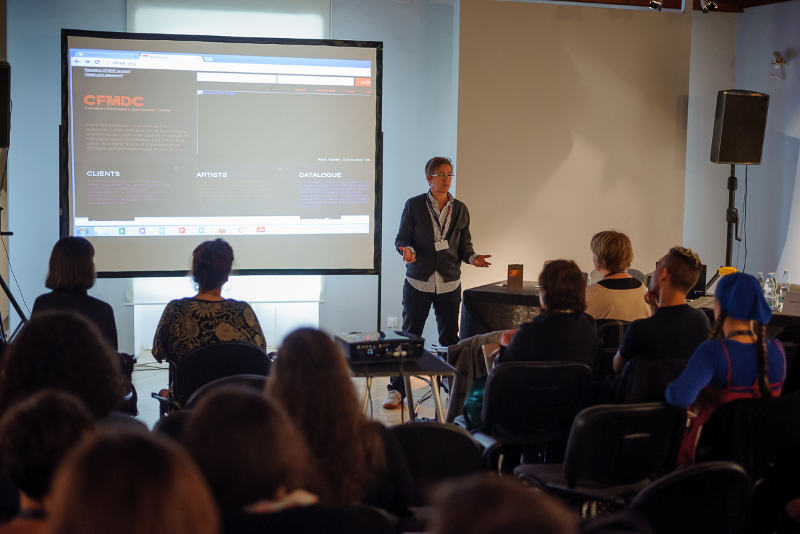
Conference Fascinations: Lauren Howes / CFMDC / Kanada
These institutions view the stewardship of their collection as a primary goal, to “manage the quality of the work as it’s being exhibited around the world,” according to vanderStoop. This means making sure the art is preserved, that the artists get paid, and that audiences see the work in its proper format and form, whether screened in a gallery or streamed over the Internet. CFMDC even includes downloadable study guides on their streaming site, packaged thematically for educational use. The LUX catalogue is online as well. The Filmmakers Coop has agreements with online streaming services. More than 100 of their films are available to stream on Fandor.
Of course there are differences between these institutions. Those in North America, particularly in the United States, have less access to public funding. Some take individual films, other are primarily interested in a body of work. But the overall message is the same. They share a mission and a philosophy of stewardship. This philosophy was expressed beautifully all day at Conference Fascinations, in an environment of collaboration and collective interest. And so, to conclude, it seems only just to cede the floor to v-tape’s Wanda vanderStoop, who summarized this shared mission with stirring clarity.
“By and large, independent artists aren’t totally concerned with their own legacy. It’s not what they think of when they’re making work. For national archives, their focus is mainstream film and television, not another level of artwork. Each of these small distributors holds an incredible legacy, an alternative history and art culture that still informs every movement that floats to the top. That’s the work that we are doing.”


